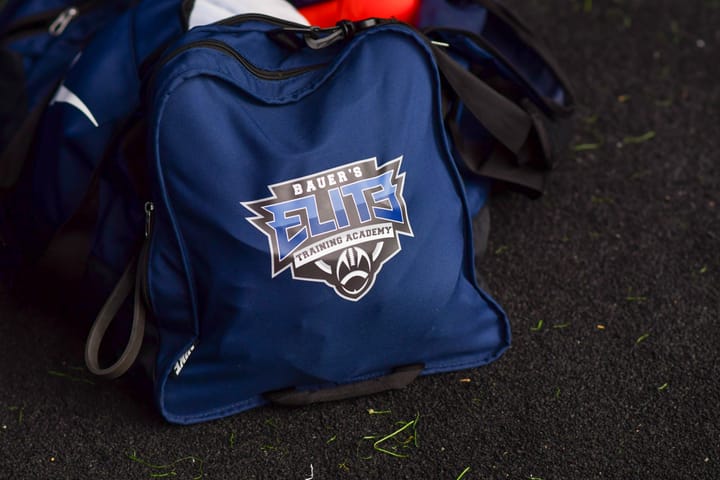Title IX noncompliant: Augustana athletics fall outside Title IX regulations
In response to Augustana University’s 2017-18 school year data, an unknown person filed an Administrative Class Complaint with the U.S. Department of Education about the school’s Title IX compliance.
The complaint, which was obtained by The Mirror through a Freedom of Information Act request, was officially filed on Feb. 11, 2020, and states that the school is not providing female athletes with an equal opportunity to play sports under Title IX’s three-part participation test. The test consists of proportionality, history of progress and accommodation of interest.
According to the complaint, Augustana failed the first test. The file states, “If Augustana had provided women in 2017-18 with proportional athletic opportunities by expanding programs or eliminating sports roster cuts, an additional 80 women would be able to play collegiate sports.”
In 2017-18, Augustana University had a student population that was 68% women and 32% men. However, the student-athlete population comprised 46.2% women and 53.8% men. This means there is a 15.8% disparity between the student population and the student-athlete population. If Augustana added 80 roster spots for women, the disparity percentage would be within Title IX compliance.
This is not the first time that complaints have been filed against Augustana with the Department of Education either. On April 15, 2017, someone submitted a Title IX complaint about Augustana’s 2015-16 data. In that year, the disparity level between the student population and the student-athlete population was 26.2%, and 135 women’s spots needed to be added to comply.
This shows that Augustana had made significant improvements since 2015-16; however, the school is still not within compliance.
Department Changes
On Jan. 4, 2021, Kimberly Miller was announced as the new associate AD for compliance and senior woman administrator. The spot was previously occupied by Ann Traphagen, who parted ways with Augustana in Fall 2020.
“I think she brings extraordinary professional experience particularly in the area of compliance, which is so important in college athletics as a senior woman administrator, as a person of color,” Augustana President Stephanie Herseth Sandlin said.
Miller has 18 years of experience in intercollegiate athletics and was most recently the deputy athletic director and senior women administrator at Savannah State University in Savannah, Georgia.
“When you’re looking at Title IX you’re not only looking at athletics but at an institution as a whole,” Miller said. “We have a much larger female population than we do male, meaning that we do have to increase opportunities for females However, we can’t neglect things on the male side.”
Augustana also announced two new sports coming to the athletic department in the 2021-22 school year: men’s swimming and diving, and women’s acrobatics and tumbling.
“Whenever you’re going to add a new sport, you have to be thinking about the impact on Title IX compliance,” Herseth Sandlin said. “You also need to be looking at it from the locker room standpoint, the strength and conditioning standpoint, the scholarship standpoint and facilities standpoint.”
To fully dissect the impact of the new sports on Title IX numbers, one needs to look at the roster spots of both teams. Acrobatics and tumbling can bring in 30 to 40 new women’s roster spots, and if swimming and diving bring in the same amount of athletes as the women’s team, Augustana is bringing in 22 men’s roster spots. Therefore, Augustana has the chance to add anywhere from eight to 18 women’s roster spots within the next couple of years.
Latest Numbers
The most recent Title IX data for Augustana can be found on the U.S. Department of Education’s sponsored, “Equity in Athletics Data Analysis” website.
Augustana’s Title IX disparity got worse in 2018-19. With a disparity of 20.8%, the institution ranks No. 12. out of 16 schools in the NSIC. The addition of two new sports will certainly help to shrink the disparity, but it won’t bring it close enough to comply with Title IX regulations.
Augustana ranked only ahead of the University of Mary (22%), University of Sioux Falls (22.3%), Minot State University (25.5%) and Upper Iowa University (26.6%).
“I’m still learning, and we are looking at things we need to do for the transition,” Miller said. “As far as getting us close to that balance when it comes to Title IX, it’s gonna be a huge task, but I feel we are moving in the right direction. In my eyes, are we ever going to get a complete balance? I don’t think it’s ever going to be a balance. But can we get close to it? I think so.”
Full Title IX compliance is hard to achieve for schools as small as Augustana. Percentages are far more volatile for Augustana, as opposed to schools like South Dakota State University or the University of Minnesota. An unbalanced student population such as Augustana’s will make it even harder.
Another challenge comes from sports like football, which require a large number of male players to be competitive. With a football team that brings in around 100 men’s roster spots, it makes it nearly impossible to fully comply with Title IX standards.
“We have to develop and be committed to the plan,” Herseth Sandlin said. “And I think that’s what we’ve shown over the past three years with ongoing improvement, knowing that we still have a gap to overcome, but that we’re still committed to overcoming the gap.”
Noah Wicks contributed to this report.



